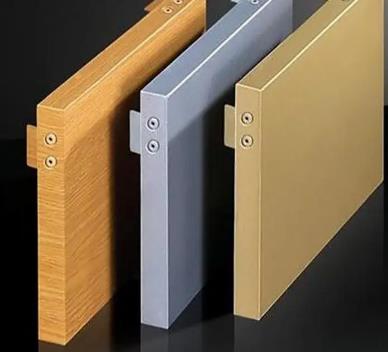Introduction
Aluminum-plastic panels have become a staple in modern construction and decoration due to their versatile properties. These composite panels, consisting of two layers of aluminum and an intermediate layer of polyethylene (PE), offer a blend of aesthetic appeal and functional benefits. This article delves into the composition, advantages, disadvantages, and applications of aluminum-plastic panels, providing a comprehensive understanding of their role in the industry.
Composition and Structure
Aluminum-plastic panels are engineered with precision, combining two outer layers of aluminum with a core layer of polyethylene. This structure ensures a lightweight yet sturdy material that can be easily manipulated for various architectural purposes. The aluminum layers provide a sleek and durable surface, while the polyethylene core adds flexibility and additional insulation properties.
Advantages of Aluminum-Plastic Panels
Lightweight
One of the most significant advantages of aluminum-plastic panels is their lightweight nature. This quality makes them easy to handle and install, reducing labor costs and simplifying the construction process. Whether used for exterior cladding or interior decoration, their light weight allows for efficient transportation and application.
Durability
Aluminum-plastic panels boast high corrosion resistance, making them ideal for long-term use in various environmental conditions. They are designed to withstand oxidation, ultraviolet rays, and other harsh climate factors, ensuring a long service life. This durability is a key reason why they are favored for building exteriors and other demanding applications.
Aesthetic Appeal
These panels offer a flat, smooth appearance that enhances the visual appeal of any structure. Available in a wide range of colors and patterns, aluminum-plastic panels can be customized to match specific design requirements. Their ability to mimic different textures and finishes adds a layer of sophistication to architectural projects.
Sound Insulation
Another noteworthy benefit is their sound insulation properties. Aluminum-plastic panels help reduce the impact of external noise, creating a quieter and more comfortable indoor environment. This makes them particularly valuable in urban settings where noise pollution is a concern.
Disadvantages of Aluminum-Plastic Panels
Susceptibility to External Forces
Despite their many advantages, aluminum-plastic panels are susceptible to damage from external forces. The surface can be easily scratched or dented, which may affect their aesthetic appeal and structural integrity.
Poor Fire Resistance
The intermediate layer of polyethylene presents a fire hazard, as it is not resistant to high temperatures. This poses a risk in situations where fire safety is paramount, and it necessitates careful consideration in material selection for specific projects.
High Cost
The production and manufacturing costs of aluminum-plastic panels are relatively high, which translates to a higher market price. While their benefits often justify the cost, budget constraints may limit their use in certain projects.
Repair Challenges
Repairing aluminum-plastic panels can be challenging, as local repairs are often not feasible. In many cases, the entire panel must be replaced, which can be costly and time-consuming.
Applications of Aluminum-Plastic Panels
Aluminum-plastic panels are widely used in various applications due to their unique properties. They are commonly employed in:
Exterior Wall Decoration: Providing a sleek, modern look to buildings while offering protection against the elements.
Interior Decoration: Enhancing the aesthetic appeal of interiors with customizable designs and finishes.
Other Fields: Including signage, transportation, and industrial applications where their durability and appearance are advantageous.
Conclusion
Aluminum-plastic panels are a versatile and valuable material in modern construction and decoration. Their advantages, such as lightweight, durability, aesthetic appeal, and sound insulation, make them a popular choice. However, their susceptibility to external forces, poor fire resistance, high cost, and repair challenges must be considered. Ultimately, selecting aluminum-plastic panels should be based on specific project needs and priorities, ensuring the best results in architectural design and functionality.
